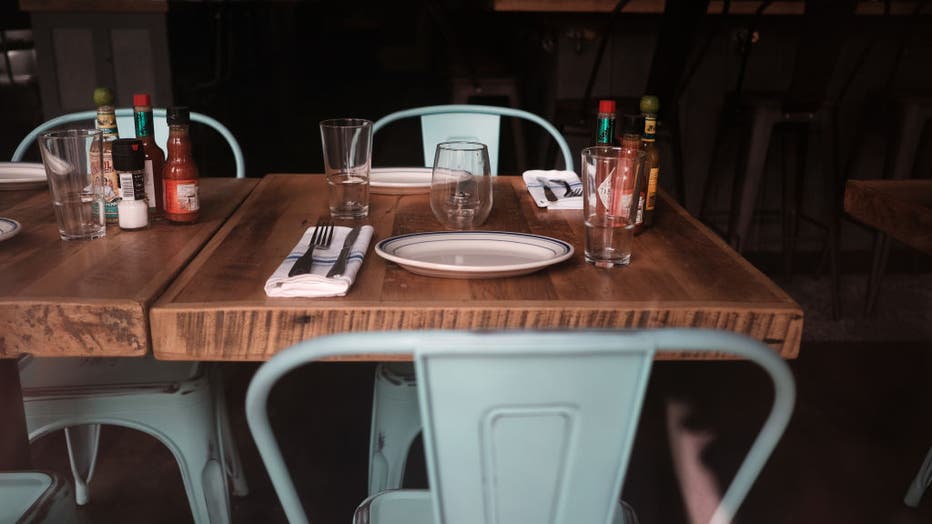CDC: People with COVID-19 twice as likely to have eaten out at a restaurant before getting sick
ATLANTA - Dining out at a restaurant or drinking at a bar may heighten the risk of becoming infected with COVID-19 compared to other social activities, including shopping, visiting a salon or working at an office, according to a new study by the U.S. Centers for Disease Control and Prevention.
The report, published Thursday by the CDC, comes as many states have begun allowing some form of indoor dining with safety measures in place — such as wearing a mask, physical distancing and limited capacity. New York Gov. Andrew Cuomo announced Wednesday that indoor dining at restaurants in the once hard-hit New York City could resume at 25% capacity beginning Sept. 30.

A table stands empty at a permanently closed restaurant in Manhattan on Aug. 31, 2020 in New York City. (Photo by Spencer Platt/Getty Images)
The CDC study included individuals who sought out a COVID-19 test at 11 U.S. health care facilities in July and filled out a questionnaire. Out of 314 patients in the study, about half of them (154) tested positive for the virus.
RELATED: CDC tells states to prepare for COVID-19 vaccine distribution as soon as October or November
The researchers asked the participants about possible community exposure in the two weeks prior to their test, such as gatherings in a home, shopping, dining in a restaurant, going to an office, salon, gym, bar/coffee shop, church gathering, or using public transportation.
For each activity, participants were asked to rate the adherence of social distancing measures at the location, like wearing a face mask. The participants lived in states across the country with differing reopening guidelines: California, Colorado, Maryland, Massachusetts, Minnesota, North Carolina, Ohio, Tennessee, Utah and Washington.
Researchers found that the study participants who tested positive for COVID-19 “were approximately twice as likely to have reported dining at a restaurant than were those with negative SARS-CoV-2 test results,” the report states.
Those who tested positive without known close contact to someone with COVID-19 were even more likely to have reported visiting a bar or coffee shop in the previous 14 days.
RELATED: Could your symptoms be COVID-19? The signs range from mild to severe
“Reports of exposures in restaurants have been linked to air circulation. Direction, ventilation, and intensity of airflow might affect virus transmission, even if social distancing measures and mask use are implemented according to current guidance,” the study authors wrote.
“Masks cannot be effectively worn while eating and drinking, whereas shopping and numerous other indoor activities do not preclude mask use,” the report adds.
One of the limitations of the study is that participants did not specify between whether they ate or drank inside or outside.
CDC guidelines indicate that drive-thrus, delivery, take-out and curbside pick-up presents the lowest risk for transmission. Restaurants with both indoor and outdoor seating, which offer full seating capacity without spacing tables apart, carry the highest risk, the CDC says.
“Choose pick-up/delivery if possible & take steps like staying 6 ft from others & wearing a mask,” the CDC said on Twitter.
RELATED: Fall allergies or COVID-19? Here's the difference between symptoms
This story was reported from Cincinnati.


